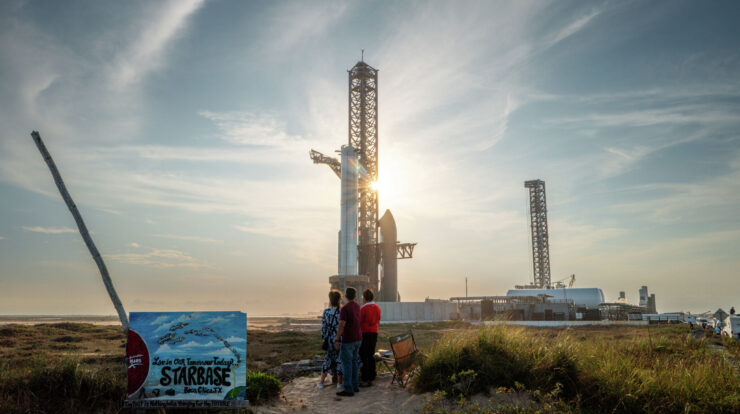
SpaceX
can now launch Starship 25 times a year in South Texas, a change that
Elon Musk
‘S space exploration firm welcomes as neighborhoods in impacted areas fret over possible damage from the potent spacecraft.
On Tuesday, the Federal Aviation Administration unveiled its highly anticipated
final assessment
surrounding a proposal for
25 Starship launches a year
In contrast to a cap of five launches, the agency stated that following “a careful and comprehensive review,” it concluded that amending SpaceX’s permit to enable a quicker launch schedule aligns with current national environmental regulations and “will not have a significant impact on the quality of the human environment.”
But others were critical of the assessment. Moriba Jah, a professor of Aerospace Engineering and Engineering Mechanics at the University of Texas at Austin, said he thought the FAA assessment “wasn’t good enough” and unnecessarily increases the launches out of Texas.
“I’m all for technology, and I’m all for space exploration and utilization of space for humanity’s benefit. There’s a right way to do it and a dumb way to do it,” Jah told Dailyexe. “I feel that we’re just doing the dumb way, which is just trying to accelerate making these things happen, versus pacing ourselves and having a successful conversation with the environment so that we can make environmentally informed and sustainable decisions.”
To Jah, the right launch cadence is one where “we make some decisions that are inclusive in terms of who we bring to the table to have a voice in those decisions, and we experiment and see what the response from the environment is.”
In the meantime, Christopher Basaldú, who is part of the South Texas Environmental Justice Network, stated that neither SpaceX nor the FAA have engaged with the Carrizo Comecrudo Tribal Nation, a community residing close to the Boca Chica launch facility.
“The FAA must send SpaceX back to ‘square one’ and demand SpaceX complete a new and full Environmental Impact Statement,” Basaldú said in a news release. “SpaceX has been polluting the land and the water and lying about it for years. For the FAA to pretend that this has ‘no significant environmental impact’ is ludicrous.”
SpaceX’s Starship along with various other rocket launches has had a significant impact on the regions near their launch sites. In December 2024, this trend continued to be observed.
study
A study published in the scientific journal Nature examined the impact of rocket launches on global efforts to conserve biodiversity. The research revealed that over 62% of operational sites are situated inside or close to protected zones. In Texas, SpaceX’s launch facility is adjacent to the lands of Boca Chica State Park. This proximity was highlighted when a Starship test flight occurred there in 2023.
ignited a blaze encompassing 3.5 acres
to the south of the launch site within the state park. Tests for Starship have also been conducted here.
damaged nearby shorebird nests
and produced a quake-like sound that experts claim could
cause structural damage
to attributes close to the launch area.
The research further highlighted the close location of the launch facility to a National Wildlife Refuge which houses approximately 1,200 plant species, 300 butterfly types, and 700 kinds of vertebrates. Experts additionally mentioned that unsuccessful launches could result in significant environmental impacts, referencing an incident involving a blaze triggered by
Russia’s Proton Rocket Launch Failure
In July 2013, when the soil and plant life were obliterated, leading to numerous wildlife species losing their homes.
Despite not being in Texas, many people elsewhere worry about the implications that more launches might have for their own neighborhoods.
In January, the FAA conducted a meeting regarding the proposal.
, a common worry about Starship’s final destination frequently involving a splashdown near the Hawaiian coastline, overlaps with
humpback whale migration routes
While some worry about whether the vehicle might impact Hawaiian monk seals, these endangered mammals living in both the isolated northwestern Hawaiian Islands and the main Hawaiian islands.
Still, the splashdown in the ocean only happens if SpaceX’s tests go according to plan rather than explode,
as the rocket has in previous launches
. Jah referenced the January Starship launch when the rocket exploded and caused
flaming debris to rain down near the Turks and Caicos Islands
. In response, Musk had posted on X, “success is uncertain, but entertainment is guaranteed.”
“When people in Turks and Caicos witnessed rocket components falling into the sea, they didn’t view it as entertainment, nor would the local wildlife,” Jah commented.





